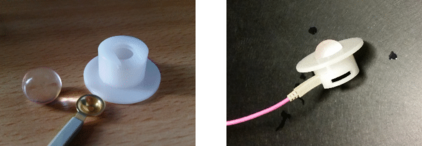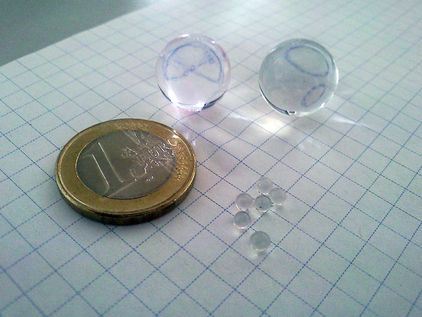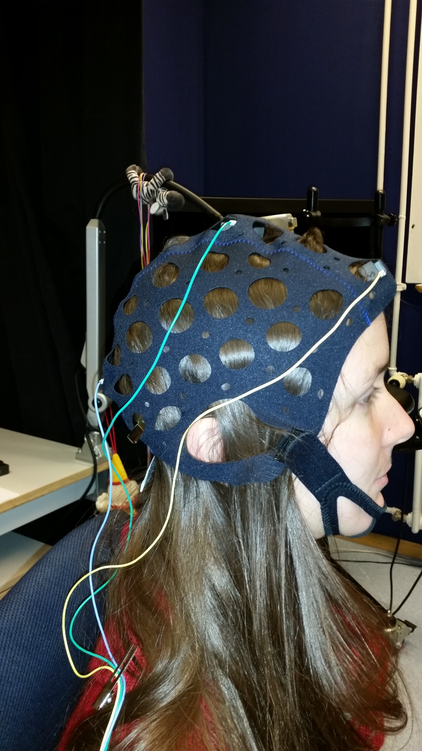Marble Electrode
Inexpensive and easy-to-use hydrogel “marble” electrodes made of a commercially available hydrogel formulation (acrylic sodium salt of cross-linked polyacrylic acid, PAA) for the recording of electroretinograms and electrical potentials of the human visual cortex.
The hydrogel can absorb water up to 500 times its weight and after swelling, it consists of up to 99.9 % of water, rendering it electrically conductive.
Publications
- Torsten Strasser, Tobias Peters, Ahmad Zhour, Doaa Akl, and Eberhart Zrenner. 2012. “A Novel Inexpensive And Preparation-Free Wet Electrode For Recording Electroretinograms In Small Animals Based On Super-Absorbent Polymers.” Investigative Ophthalmology & Visual Science 53 (14): 2462.
- Torsten Strasser, Peters, Tobias, and Zrenner Eberhart. 2013. Grundkörper, Halter, Kit und Elektrodenanordnung sowie Verfahren zur Herstellung, issued October 31, 2013. www.google.com/patents/DE102012101337B4.
- Torsten Straßer, Susanne Kramer, Melanie Kempf, Tobias Peters, Anne Kurtenbach, and Eberhart Zrenner. 2019. “Visual Evoked Potentials Used to Evaluate a Commercially Available Superabsorbent Polymer as a Cheap and Efficient Material for Preparation-Free Electrodes for Recording Electrical Potentials of the Human Visual Cortex.” Sensors 19 (22): 4890. doi:10.3390/s19224890.






